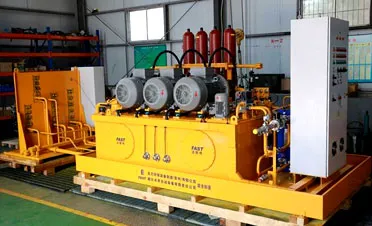aluminum die casting
Understanding Aluminum Die Casting Benefits and Applications
Aluminum die casting is a manufacturing process that uses molten aluminum to produce intricate and precise metal parts. This method is widely favored across various industries for its ability to create components with excellent dimensional accuracy and surface finishes. The process involves forcing molten aluminum into a steel mold, or die, under high pressure. The resulting parts are usually lightweight, durable, and resistant to corrosion, making aluminum die casting a popular choice for a diverse range of applications.
The Process of Aluminum Die Casting
The aluminum die casting process begins with the melting of aluminum ingots in a furnace. Once the aluminum reaches the desired temperature, it is transferred into a die casting machine. The machine consists of two halves the fixed half, which houses the injection system, and the movable half that forms the cavity of the die. The die is lubricated to ensure easy ejection of the finished part.
Next, the molten aluminum is injected into the mold under high pressure, ensuring that the metal fills every intricate detail of the die. This high-pressure injection allows for faster cooling and reduced cycle times, resulting in enhanced productivity. After the aluminum solidifies, the die opens, and the casting is ejected. The components may then undergo secondary processes such as machining, surface treatment, or assembly to meet specific customer requirements.
Advantages of Aluminum Die Casting
One of the primary advantages of aluminum die casting is the exceptional dimensional accuracy it provides. Parts produced through this method typically exhibit tight tolerances, which is crucial in industries where precision is paramount. Moreover, the surface finish of die-cast aluminum components is often superior to that of parts made by other casting methods, minimizing the need for extensive post-processing.
Another significant benefit is the lightweight nature of aluminum. This feature is particularly advantageous for industries such as automotive and aerospace, where reducing weight can lead to improved fuel efficiency and performance. Additionally, aluminum’s intrinsic corrosion resistance extends the longevity of die-cast parts, making them ideal for use in harsh environments.
aluminum die casting

Cost efficiency is another major benefit of aluminum die casting
. Although the initial tooling costs can be high, the durability and efficiency of the process often lead to lower production costs per unit in large-scale manufacturing. The high-speed operation of die casting minimizes cycle times, allowing manufacturers to produce large quantities of parts quickly.Applications of Aluminum Die Casting
The versatility of aluminum die casting makes it suitable for a wide array of applications across multiple industries. In the automotive sector, it is used to manufacture components such as engine blocks, transmission cases, and decorative trim. These components benefit from aluminum's lightweight and strength characteristics, which contribute to overall vehicle efficiency.
In the electronics industry, aluminum die casting is utilized to create enclosures for devices, heat sinks, and other components. The thermal conductivity of aluminum helps dissipate heat, making it an excellent choice for electronic applications.
Furthermore, the aerospace industry also relies on aluminum die casting for various parts due to its high strength-to-weight ratio. Components such as brackets, housings, and structural elements are frequently produced using this method, where performance and reliability are critical.
Conclusion
Aluminum die casting represents a sophisticated and efficient manufacturing technique that offers numerous benefits, including precision, lightweight construction, and durability. Its applications span across diverse industries, making it an essential process for producing high-quality components in today’s competitive market. As technology evolves, innovations in die casting are expected to further enhance its capabilities, leading to even greater efficiencies and broader applications in the future. By understanding aluminum die casting, businesses can leverage its advantages to meet the demands of their specific industries while ensuring quality and cost-effectiveness in production.
-
Precision Sheet Metal Stamping Manufacturer | Fast & ReliableNewsAug.01,2025
-
OEM Sand Cast Pump Valve Fittings - Baoding Hairun Machinery And Equipment Trading Co., Ltd.NewsAug.01,2025
-
Custom OEM Impellers | High Efficiency & PrecisionNewsAug.01,2025
-
OEM Sand Cast Pump Valve Fittings - Baoding Hairun Machinery | Customization, Quality AssuranceNewsAug.01,2025
-
OEM Sand Cast Pump Valve Fittings - Baoding Hairun Machinery And Equipment Trading Co., Ltd.NewsAug.01,2025
-
OEM Sand Cast Pump Valve Fittings - Baoding Hairun Machinery And Equipment Trading Co., Ltd.NewsJul.31,2025















